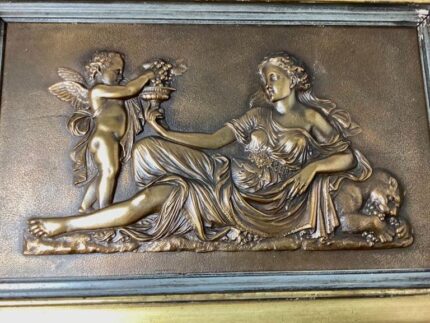Satsuma is a famous representative ceramic in Japan with a cracked glaze。 it dated back to 1592-1598, the lord of Satsuma domain, brought back 80 Korean potters. This Korean potter became the originator of Satsuma ware.
from the Edo period to the Meiji period, the Satsuma domain exhibited it at the Paris World Exposition and received high praise in Europe. Particularly at the Paris World’s Fair, it was popularly known as “SATSUMA,” and it also influenced the trend of Japonism (Japanese hobbies). In 2002, it was designated as a national traditional craft, and is considered an important cultural property that conveys its value and history to future generations.
“white Satsuma” and “black Satsuma”.
white Satsuma was first produced in the early Edo period. Due to its precious raw materials and delicate appearance, it was favored by high-level people among the Satsuma clan as a high-end product. as a Japanese export, it became quite popular among European aristocrats and wealthy families. after the Meiji Restoration,
The “precious raw material” refers to soil. Since the white soil that is the raw material which is only available in a few places in Satsuma (Kagoshima), white Satsuma itself is considered a valuable item. The “slim appearance” refers to the fine cracks on the surface. This type of crack is called “penetration” and is caused by the difference in shrinkage between the part of the soil and the glaze (the part with a smooth surface). Other pottery would be considered a failure if it had cracks, but when White Satsuma is penetrated, it can be said to have its “taste.”
traditionally Satsuma ware uses peonies and chrysanthemums a lot for decoration. Peonies symbolize wealth, and chrysanthemums are the symbol of Japanese nobility. In Japan, the chrysanthemum is recognized as the national flower because it is the Imperial Emblem of Japan. the “official” Japanese flower is the 16-petal chrysanthemum used for the imperial seal. you will see the imperial seal on the cover of Japanese passports, on some Japanese coins,
this hand painting with heavy gold Ginger Jar was produced by 正峯窑( Masho ( mark on bottom)
which is a ceramic manufacturing company founded in 1921. The company’s predecessor was the “Nakamura Porcelain Factory” founded in 1888. After several reorganizations and expansions, the “Masho Porcelain Co., Ltd.” was officially established in 1921. The company mainly produces high-end ceramic products, including tea sets, vases, tableware, etc., and enjoys a high reputation in Japanese and international markets
Circa: 1921-1943″
One character of real Satsuma is the whole body of porcelain is in “Ice crack pattern”, WHICH ALSO CALLED cracked porcelain, is a variety of ancient Long quan celadon by Ge Kiln in the Song Dynasty and was the most famous . ice crack is the best pattern among the various glaze cracks of Ge Kiln, Satsumo mastered this technic very well as the cracks spread through in this jar.
- Dimensions
- 5ʺW × 5ʺD × 6ʺH
- Styles
- Japanese
- Period
- Early 20th Century
- Country of Origin
- Japan
- Item Type
- Vintage, Antique or Pre-owned
- Materials
- Ceramic
- Condition
- Good Condition, Original Condition Unaltered, Some Imperfections
- Color
- White
- Condition Notes
excellent, no crack , no repair , no chips
excellent, no crack , no repair , no chips less










































Reviews
There are no reviews yet.